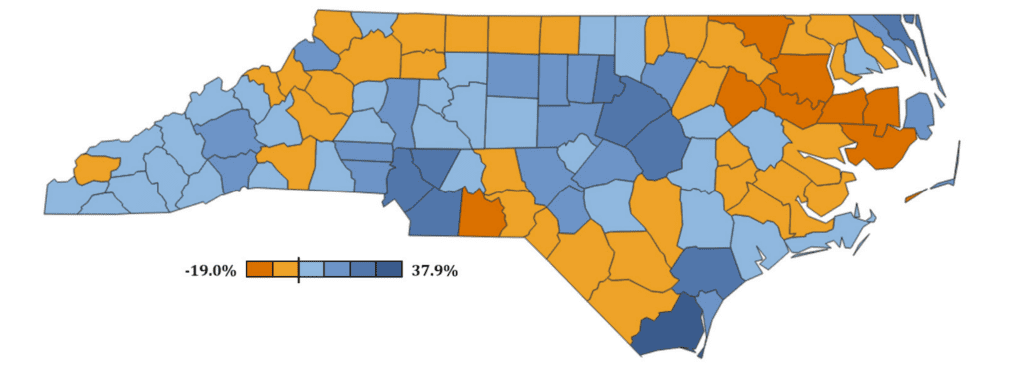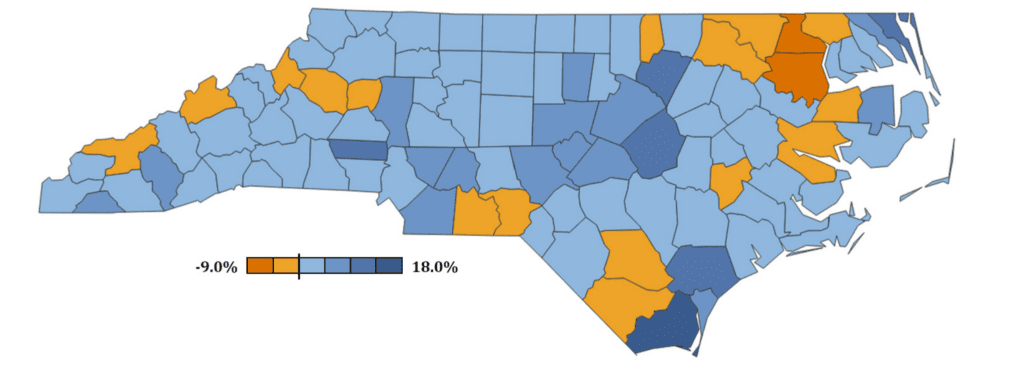
|
|
“We’re pleased to bring you good news regarding continued positive growth in North Carolina’s rural population,” writes Patrick Woodie, president and CEO of the N.C. Rural Center, in a newsletter announcing a new report about recent population growth in rural North Carolina. “The most recent data confirms that we are on an upward, positive trajectory and growth is more consistently balanced across rural, urban, and suburban areas than it has been in some time.”
Here is what you need to know, straight from the report:
The population in North Carolina’s 78 rural counties grew by 106,632 people from 2010-2020, a 2.9 percent increase.
Despite this growth, many rural counties lost population during this time, and rural growth lagged that of suburban and urban counties.
From 2020-2023, growth in rural North Carolina accelerated to 2.7 percent, adding almost as many people in just three years as in the previous decade.
The difference between rural, suburban, and urban growth was narrower during this time.
Further analysis shows that increased net migration into rural counties was the primary cause of rural growth.
Rural net migration started growing in the late-2010s, but accelerated after the COVID-19 pandemic and has continued to rise, leading to the greatest rural population growth in over a decade.
Rural Resurgence: Recent Population Growth in Rural N.C.
‘Quite a turnaround’
Population Change by County: 2010-2020
Despite the overall growth, “from 2010-2020, 42 of North Carolina’s 100 counties lost population,” writes Woodie. “All of them were rural counties.”

Population Change by County: 2020-2023
The most recent data indicates that only 18 rural counties lost population between 2020 and 2023. “It’s quite a turnaround,” Woodie noted.

Woodie says the data “reminds us how just how rural North Carolina is even after decades of change. We still have the second-largest rural population in the United States — second only to Texas.”
The state’s population, he says, “is close to being equally divided among rural, urban, and suburban counties.”
Woodie notes the greatest population increases in the state are occurring among rural counties right next door to cities.
The trend in population growth in rural counties, the report finds, is “largely tied” to opportunities to work virtually emerging from the pandemic and the now unprecedented opportunities for people to live where we want to live and work from home.
Communities with lower costs of living tend to be in the suburbs and rural areas, according to the report.
“Rural communities in North Carolina are attractive to people,” the report, authored by Dalton Bailey, research and data manager for the N.C. Rural Center, says.
This population growth is good for local rural economies, but growth can bring challenges, including affordable housing, unemployment. and infrastructure stress.
The N.C. Rural Center cautions that it is unclear when this growth will peak or just how long into the future it will last.
Here is the report and here is an interactive data dashboard for more information.





